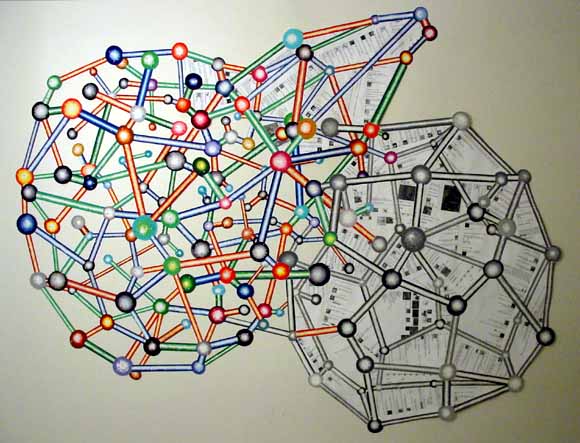View current page
...more recent posts

Dan at Iconoduel recently summarized a book by James Elkins titled "What Happened to Art Criticism?" While it is mostly fair in assessing the sources and limitations of criticism, Elkins gives short shrift to artists as originators of art world concepts, vocabularies, and judgments; in fact he gives them no shrift. He compares scholars who dispassionately critique critiques (in the field known as "reception history") to entomologists observing ant battles, with no stake at all in the outcome. And that's pretty much how he deals with artists--as people to write about but rarely read. So to Elkins' laundry list of critical sources (cultural history, philosophy, academic treatises, poetic criticism, etc.) I propose adding another: artist polemics.
Reviews, manifestos, transcribed panel discussions, artist's statements, press releases, interviews, studio talk, letters, emails, blog entries, slides, jpegs, Quicktime movies, chat room dialogue by artists: those are the engines that drive theory and judgment in the art world (electronic media being new components, obviously). Art writers who aren't also artists do participate, internalize concepts, write them up in a more dignified or cohesive or exciting way, maybe even put a new, brilliant spin on them, but their efforts will always be secondary to the main enterprise of artist-generated discourse, which necessarily includes criticism.
I think it was philosopher and former printmaker Arthur Danto who said artists don't make good critics because they're too focused, tunnel-vision-like, on their own practice (Elkins doesn't even give them that). Spoken like a true ex-artist! Donald Judd, Robert Smithson, Barnett Newman, Adrian Piper, Robert Motherwell, Art & Language, Joseph Kosuth, Barbara Kruger, Peter Halley (I could keep going) may not be the best writers or talkers in the world, but indisputably they catalyze, they content-provide, they know their history, and they judge. Clement Greenberg learned about flatness, color, push and pull and the rest of it from hanging out with artists, notably Hans Hoffman in the early days. Elkins writes as if Clem invented all his terminology himself.
Elkins devotes much ink to a weird distinction between Michael Fried and Jerry Saltz on the subject of whether critics should "take a position" when criticizing. Back in the day, the actual dialogue between Fried and an artist, Robert Smithson, on an actual position, Minimalism, was far more interesting. The only artist I can recall Elkins quoting at length is Andrea Fraser, and she is amazingly articulate. Possibly Elkins has a bone to pick with uppity artists, complaining early on that one changed what he wrote about her in a catalog essay. Deleting his word ("sad") without telling him was indisputably bad manners, but Elkins should have been more humble about his role as a catalog scribe, which is to help nail down the artist's vision as a kind of first draft of art history.
